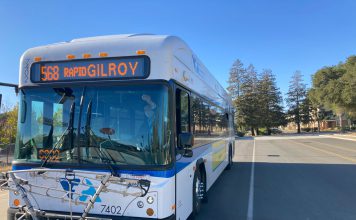San Jose
– The Santa Clara County Board of Supervisors Tuesday adopted a
set of interim guidelines to govern development proposals for land
covered by the controversial Williamson Act.
San Jose – The Santa Clara County Board of Supervisors Tuesday adopted a set of interim guidelines to govern development proposals for land covered by the controversial Williamson Act.
Under the rules, Williamson Act contracts apply only to parcels of at least 10 acres of prime farmland – typically valley floor land able to support orchards or row crops – or 40 acres of non-prime grazing land.
Most horse operations will not be considered agriculture. Additionally, prime land parcels must generate at least $3,500 of farm income annually. The minimum for non-prime land would be $2,000.
Property owners who wish to build a home or otherwise develop their property must meet the criteria to receive approval. For now, farmers who don’t meet size requirements but do meet income thresholds will be eligible to build. Farmers who meet the size requirements will be eligible if they can produce IRS documents that prove they have an agricultural enterprise.
The guidelines mirror those proposed last month by Agriculture Commissioner Greg Van Wassenhove and Supervisor Don Gage and are the first step in a process that should culminate next year with the eviction from the act of hundreds of non-compliant property owners.
“We need to take this in pieces, look at what is working in agriculture and get down to those that are the real problem,” Gage said Tuesday.
Under the 1965 Williamson Act, property owners receive a tax break in exchange for maintaining a farming enterprise or preserving particular types of open space. But over the last 30 years, the county has allowed illegal subdivisions. As many as 1,200 parcels may be receiving illegitimate tax breaks of several thousand dollars annually.
The vast majority of the nearly 3,000 Williamson parcels are related to non-prime land. Of the 1,172 that don’t meet minimum size requirements, 893 are non-prime. Of the 1,172 parcels, 501 have been developed.
The county first attempted to address its Williamson Act troubles in 2003 after an audit performed by the California Department of Conservation revealed the county’s failure to enforce the law. An initial effort to non-renew some parcels was tabled after a huge public outcry, but the agriculture and planning offices instituted a new set of rules, including a $10,000 income figure, to apply to contract holders who want to build homes on their land. County officials now hope to eliminate all non-compliant contracts by November 2006.
Although, the minimum income requirements have been lowered substantially, cattle ranchers continue to argue that the economics make meeting any income standard impossible in many parts of the county.
Rex Lindsay, a representative of the Mt. Hamilton Range Improvement Association, said Tuesday that an onerous income requirement will force ranchers to subdivide and sell off their properties.
“We need this change because we’ve had impossible conditions for people for nearly three years,” Lindsay said.
Target dates for Williamson Act Reform
October 2005
• Adopt guidelines to non-renew non-compliant parcels
• Establish a new Agriculture preserve Map
• Adopt criteria to transfer properties from Williamson Act to Open Space Easement Act
January 2006-July 2006
• Issue notice of non-renewal of non-compliant contracts and consider protests
October 2006
• Finalize non-renewal
November 2006
• Amend county Williamson Act ordinance to reflect policy changes













